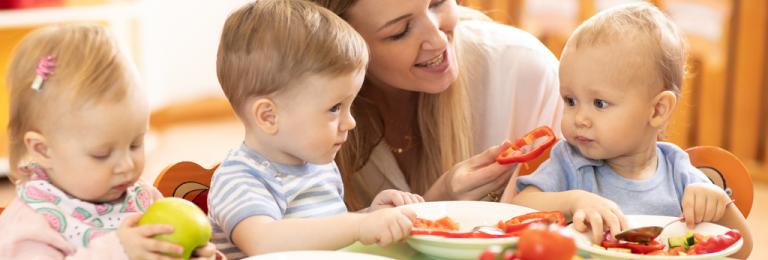Meals and Snacks from Home
As Early Years Providers, you have learned what are recommended foods to serve the children in your care, based on the Canada’s Food Guide approach to healthy eating. See our post on Canada's Food Guide.
However, not all parents have this knowledge or experience with recommended practices for feeding children. Foods selected by parents for their children will be based on their own values and experiences with food relating to culture, economics, religion and possibly nutrition information, whether from a reputable resource or not. It’s important to respect this differing knowledge that parents provide and never to shame a child, or their family, for food sent from home.
Here are some ways to manage foods from home:
• Sweet treats. Although we recommend that sugary treats are not provided by care centres, they may still come from home. It’s important not to shame a child for having this food in their lunch or if they choose to eat it first. It is not your role as an Early Years Provider to classify foods as ‘healthy’ or ‘unhealthy’ to children at this age. A Healthy Eating Policy for your centre can include lists of foods that should come in lunches (e.g. vegetables, fruit, whole grain foods, protein foods) and which ones should not (e.g. sugary beverages, candy, chips, choking hazards, allergenic foods that may put food-allergic children at risk).
• Lack of Vegetables and Fruit. There may be many reasons why a parent has not sent these important foods in a child’s lunch. It could be that they are struggling financially or are crunched for time getting to the grocery store. It could be that they have experienced the food waste that can result from picky eaters who do not want to taste certain foods. It could also be based on their own food preferences and the values they have developed around food. Consider implementing a ‘share basket’ where families who are able can contribute vegetables and fruit to share as a group or potentially allocating some funding from the centre (grant funding may also be available in your community) to buy vegetables and fruit to eat as a group. The more we can eat the same foods together, the stronger the effect of peer and caregiver influence will be on those children who may be hesitant to try a new food.
• Canada’s Food Guide. This reputable and easy-to-navigate resource should be displayed at your centre for staff, children and parents to see and understand. Or consider sending a copy home with each child (do NOT single out certain children or families) to encourage parents to send foods based on the Food Guide recommendations.
